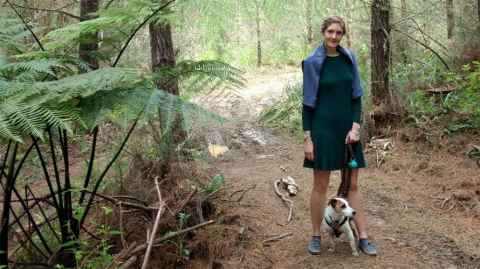Take 10 with... Charlotte Jones-Todd
Dr Charlotte Jones-Todd from the Department of Statistics gives us 10 minutes of her time to discuss how she joins the dots to characterise patterns and infer processes that drive what we see.

1. Describe your research topic to us in 10 words or less.
Dots: where they are and why they are there.
2. Now describe it in everyday terms!
In my research the dots, or more formally, the points, refer to the location of objects or events in space and over time. For example, earthquake epicentres, animal lairs, terrorism attacks, and even cell nuclei locations can all be thought of as point patterns. I look at how we can characterise these patterns and how we can infer the processes (biological or environmental or otherwise) that drive what we see.
3. Describe some of your day-to-day research activities.
When I was younger I’d imagine academics thoughtfully scribbling complicated mathematical equations on a blackboard, contemplating what they’d written, and stroking their beards. There is so much wrong with that image my younger self conjured up—and not just the bearded man. Rather than blackboards much of my work is carried out on a computer. From communicating with colleagues across the globe, finding new articles to read, to coding up statistical models, my day-to-day research activities are quite varied.
4. What do you enjoy most about your research?
Without a doubt, when you finally know your idea works. From dreaming it up, battling all the hurdles, doing the maths, and getting your code working (reliably), the best feeling is when that journey has run its course. The time just before the paper writing and rejections start!
5. Tell us something that has surprised or amused you in the course of your research.
Everyone is still learning and that there is no-one in the room more expert than you about your own research. It can be far too easy to be daunted by senior academics and people whose work you've pored over and learnt from; however, I've always found that at whatever stage of career people are keen to hear and learn about your research, often over a pint or two at a conference!
6. How have you approached any challenges you’ve faced in your research?
As an academic I find myself making many mistakes and failing quite a bit: failing to get code working, having a grant or paper rejected, getting a less than positive student review. These are all aspects of academia and all things you deal with day-to-day. For me, peer rejections are one of the most challenging, and unavoidable, aspects of academia. It can be far too easy to see them as an attack on you when in reality it’s just because there are hundreds of others in your position too.
So my approach? To be glib, have a large glass of wine, scratch my dog's ear, and start again.
7. What questions have emerged as a result?
Does it ever end?
I guess I'm half joking here. Honestly though, rejections are often opportunities to improve your work. Often a reviewer's misunderstanding of, or issues with, your work forces you to rethink how you could better communicate or improve it.
8. What kind of impact do you hope your research will have?
Applications of my research are quite varied: point processes are inherent across many fields of research. My main hope is that end users can apply my methods and gain a better understanding of the processes driving the point patterns they observe, whatever their field of interest may be.
9. When you collaborate across the faculty or University, or outside the University, who do you work with and how does it benefit your research?
Collaboration is an integral part of research for me. From hallway chats to long term research projects, new and different perspectives are key when facing problems to solve.
Internationally I've worked with Professor Jainine Illian and Dr Ben Swallow (University of Glasgow), Professor Len Thomas (CREEM, University of St Andrews), Dr Enrico Pirotta (Washington State University).
New Zealand based collaborators include Dr Elizabeth Graham (National Institute of Water and Atmospheric Research, NIWA). Within the university I've worked with Dr Rebecca Meiring (Exercise, Sport and Rehabilitation Sciences) and on occasion Dr Ben Stevenson (Department of Statistics). Not included in this list are a fabulous bunch of research students with whom I've worked.
10. What one piece of advice would you give your younger, less experienced research self?
The choice is yours: live to work or work to live. I definitely opt for the latter!